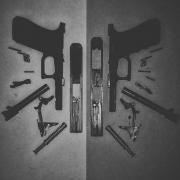I know absolutely dick about sharpening knives and while i have a friend who does it as a hobby(has a nice belt setup and does my stuff for free), i think I'd rather learn to do it myself.
I was going to just buy a wicked edge and learn on that but it seems like a more valuable skill to know how to both hand sharpen and/or learn the science behind process if i do decide to go with a sharpening system, whether wicked edge or worksharp e.t.c...
I want to start with some reading on the subject. What are some good books to start with? I'm looking for both techniques/how to's as well as technical info such as edge profiles, sharpening materials, intended uses etc...
Just looking for a starting point as far as reading material and I'll work outward from there, eventually getting some hardware to start with. What do you use for resources?




 Reply With Quote
Reply With Quote


 Thanks for the recommendation, it seems like a great value once I get started.
Thanks for the recommendation, it seems like a great value once I get started.





